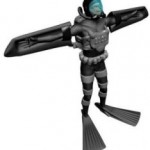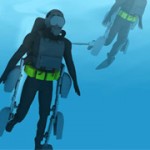Archive for Сентябрь, 2008
Case-Based Reasoning – an Effective Paradigm for Providing Diagnostic Support For Stroke Patients
- Тип контента: Научная статья
- Номер документа: 6680
- Название документа: Case-Based Reasoning – an Effective Paradigm for Providing Diagnostic Support For Stroke Patients
- Номер (DOI, IBSN, Патент): Не заполнено
- Изобретатель/автор: MARIAM BAIG
- Правопреемник/учебное заведение: Queen’s University Kingston, Ontario, Canada
- Дата публикации документа: 2008-09-30
- Страна опубликовавшая документ: Канада
- Язык документа: Английский
- Наименование изделия: Не заполнено
- Источник: Copyright ©Mariam Baig, 2008
- Вложения: Да
- Аналитик: Глаголева Елена
 A Stroke can affect different parts of the human body depending on the area of brain affected; our research focuses on upper limb motor dysfunction for stroke patients. In current practice, ordinal scale systems are used for conducting physical assessment of upper limb impair-ment. The reliability of these assessments is questionable, since their coarse ratings cannot reliably distinguish between the different levels of performance. This thesis describes the design, implementation and evaluation of a novel system to facilitate stroke diagnosis which relies on data collected with an innovative KINARM robotic tool. This robotic tool allows for an objective quantification of motor function and performance assessment for stroke patients. The main methodology for the research is Case Based Rea-soning (CBR) — an effective paradigm of artificial intelligence that relies on the principle that a new problem is solved by observing similar, previously encountered problems and adapting their known solu-tions. A CBR system was designed and implemented for a repository of stroke subjects who had an explicit diagnosis and prognosis. For a new stroke patient, whose diagnosis was yet to be confirmed and who had an indefinite prognosis, the CBR model was effectively used to retrieve analogous cases of previous stroke patients. These similar cases provide useful information to the clinicians, facilitating them in reaching a potential solution for stroke diagnosis and also a means to validate other imaging tests and clinical assessments to confirm the diagnosis and prognosis.
A Stroke can affect different parts of the human body depending on the area of brain affected; our research focuses on upper limb motor dysfunction for stroke patients. In current practice, ordinal scale systems are used for conducting physical assessment of upper limb impair-ment. The reliability of these assessments is questionable, since their coarse ratings cannot reliably distinguish between the different levels of performance. This thesis describes the design, implementation and evaluation of a novel system to facilitate stroke diagnosis which relies on data collected with an innovative KINARM robotic tool. This robotic tool allows for an objective quantification of motor function and performance assessment for stroke patients. The main methodology for the research is Case Based Rea-soning (CBR) — an effective paradigm of artificial intelligence that relies on the principle that a new problem is solved by observing similar, previously encountered problems and adapting their known solu-tions. A CBR system was designed and implemented for a repository of stroke subjects who had an explicit diagnosis and prognosis. For a new stroke patient, whose diagnosis was yet to be confirmed and who had an indefinite prognosis, the CBR model was effectively used to retrieve analogous cases of previous stroke patients. These similar cases provide useful information to the clinicians, facilitating them in reaching a potential solution for stroke diagnosis and also a means to validate other imaging tests and clinical assessments to confirm the diagnosis and prognosis.
Категория: Научные статьи | Нет комментариев »
Человек-амфибия: боевой пингвинчик
- Тип контента: Новостная статья
- Номер документа: 2486
- Название документа: Человек-амфибия: боевой пингвинчик
- Номер (DOI, IBSN, Патент): Не заполнено
- Изобретатель/автор: Не заполнено
- Правопреемник/учебное заведение: Не заполнено
- Дата публикации документа: 2008-09-30
- Страна опубликовавшая документ: Россия
- Язык документа: Русский
- Наименование изделия: Не заполнено
- Источник: http://www.popmech.ru/article/4047-chelovek-amfibiya/
- Вложения: Не заполнено
- Аналитик: Ридна Украина)))
 Американские военные активно работают над «устройствами, которые улучшают или расширяют физические возможности человеческого тела» — и прежде всего, это касается всевозможных экзоскелетов для увеличения силы, подвижности, неуязвимости и выносливости бойца.
Американские военные активно работают над «устройствами, которые улучшают или расширяют физические возможности человеческого тела» — и прежде всего, это касается всевозможных экзоскелетов для увеличения силы, подвижности, неуязвимости и выносливости бойца.
Категория: PISCES | 1 Комментарий »
Wearing Type Behavior Help Device, Wearing Type Behavior Help Device Calibration Device, and Calibration Program
- Тип контента: Патент
- Номер документа: 4593
- Название документа: Wearing Type Behavior Help Device, Wearing Type Behavior Help Device Calibration Device, and Calibration Program
- Номер (DOI, IBSN, Патент): US2008/0234608A1
- Изобретатель/автор: Sankai, Y.
- Правопреемник/учебное заведение: Не заполнено
- Дата публикации документа: 2008-09-25
- Страна опубликовавшая документ: США
- Язык документа: Английский
- Наименование изделия: Не заполнено
- Источник: http://www.freepatentsonline.com/y2008/0234608.html
- Вложения: Да
- Аналитик: Дмитрий Соловьев
 [Problem to be Solved] The problem to be solved by the present invention is to reduce the load applied to the wearer by correcting a parameter in correspondence with detectivity of biosignals. [Means to Solve Problem] The calibration controlling part 162 of the movement assisting apparatus 10 enables the power amplifying part 158 to apply a driving force of the driving source 140 as a load (input torque) from the load generating part 164 to the wearer 12 when the wearer 12 wears the movement assisting wearing device. Then, the wearer 12 applied with the driving force of the driving source 140 generates power from the skeletal muscles by performing a predetermined calibration operation. Accordingly, the physical phenomenon detecting part 142 detects joint angle along with the calibration operation, and the biosignal detecting part 144 detects myoelectric signals. In the parameter correction part 156, a parameter K is corrected based on the difference between the load (input torque) and the driving force (muscular strength) being calculated by the difference deriving part 154 with respect to the phase identified by the phase identifying part 152.
[Problem to be Solved] The problem to be solved by the present invention is to reduce the load applied to the wearer by correcting a parameter in correspondence with detectivity of biosignals. [Means to Solve Problem] The calibration controlling part 162 of the movement assisting apparatus 10 enables the power amplifying part 158 to apply a driving force of the driving source 140 as a load (input torque) from the load generating part 164 to the wearer 12 when the wearer 12 wears the movement assisting wearing device. Then, the wearer 12 applied with the driving force of the driving source 140 generates power from the skeletal muscles by performing a predetermined calibration operation. Accordingly, the physical phenomenon detecting part 142 detects joint angle along with the calibration operation, and the biosignal detecting part 144 detects myoelectric signals. In the parameter correction part 156, a parameter K is corrected based on the difference between the load (input torque) and the driving force (muscular strength) being calculated by the difference deriving part 154 with respect to the phase identified by the phase identifying part 152.
Категория: Патенты | Нет комментариев »
Подводный экзоскелет копирует черепах и дельфинов
- Тип контента: Новостная статья
- Номер документа: 2201
- Название документа: Подводный экзоскелет копирует черепах и дельфинов
- Номер (DOI, IBSN, Патент): Не заполнено
- Изобретатель/автор: Не заполнено
- Правопреемник/учебное заведение: Не заполнено
- Дата публикации документа: 2008-09-19
- Страна опубликовавшая документ: Россия
- Язык документа: Русский
- Наименование изделия: Не заполнено
- Источник: http://www.membrana.ru/particle/3287
- Вложения: Не заполнено
- Аналитик: Ридна Украина)))
 Повышение индивидуальной эффективности солдата специального назначения за счёт объединения нескольких технических подсистем в одном роботизированном костюме становится всё более популярным у военных. Изучив существующие сухопутные наработки, Министерство обороны США заказало учёным подводную версию экзоскелета под кодовым именем PISCES – «Рыбы».
Повышение индивидуальной эффективности солдата специального назначения за счёт объединения нескольких технических подсистем в одном роботизированном костюме становится всё более популярным у военных. Изучив существующие сухопутные наработки, Министерство обороны США заказало учёным подводную версию экзоскелета под кодовым именем PISCES – «Рыбы».
Категория: PISCES | Нет комментариев »
Compliant actuation of rehabilitation robots
- Тип контента: Научная статья
- Номер документа: 1102
- Название документа: Compliant actuation of rehabilitation robots
- Номер (DOI, IBSN, Патент): 10.1109/MRA.2008.927689
- Изобретатель/автор: Veneman, J.F., van der Kooij, H., Van Asseldonk, E.H.F., Vallery, H., Ekkelenkamp, R., Buss, M.
- Правопреемник/учебное заведение: Sensory Motor Syst. Lab., ETH Zurich, Zurich
- Дата публикации документа: 2008-09-12
- Страна опубликовавшая документ: Швейцария
- Язык документа: Английский
- Наименование изделия: Не заполнено
- Источник: http://ieeexplore.ieee.org/search/freesrchabstract.jsp?tp=&a
- Вложения: Да
- Аналитик: Дмитрий Соловьев
 This article discusses the pros and cons of compliant actuation for rehabilitation robots on the example of LOPES, focusing on the cons. After illustrating the bandwidth limitations, a new result has been derived: if stability in terms of passivity of the haptic device is desired, the renderable stiffness is bounded by the stiffness of the SEA’s elastic component. In practical experiments with the VMC, the aforementioned limitations affected the control performance. Desired gait modifications were not tracked exactly, because the subjects were able to deviate from the prescribed pattern even in the stiffest possible configuration. Despite the limitations, the practical experiments also demonstrated the general effectiveness of the realization. Manipulation of selected gait parameters is possible, whereby other parameters are left unaffected. This high selectivity is made possible by the low level of undesired interaction torques, which is achieved by elastic decoupling of motor mass and a lightweight exoskeleton. The discrepancy between theoretical bounds and rendered stiffness indicated that healthy subjects might represent a stabilizing component of the coupled system, which could be different for patients. In light of the theoretical stability analysis and with the focus on patients, the LOPES actuation was slightly modified. The robot was equipped with stiffer springs to obtain sufficient stiffness and to ensure stability without relying on stabilizing effects of the human. For this application, the disadvantages of compliant actuation can thus be tolerated or dealt with, and they are small compared with the advantages. Given that a rehabilitation robot, in the first place, is supposed to imitate therapist action, the limitations of bandwidth and stiffness do not pose severe problems. In contrast, safety and backdrivability are highly relevant, and they can be ensured easier with a compliant actuator. Therefore, we conclude that compliant actuation and a lightw- — eight exoskeleton provide effective means to accomplish the desired AAN behavior of a rehabilitation robot. The next step is to evaluate the robot behavior, control performance, and therapeutic effectiveness in patient studies.
This article discusses the pros and cons of compliant actuation for rehabilitation robots on the example of LOPES, focusing on the cons. After illustrating the bandwidth limitations, a new result has been derived: if stability in terms of passivity of the haptic device is desired, the renderable stiffness is bounded by the stiffness of the SEA’s elastic component. In practical experiments with the VMC, the aforementioned limitations affected the control performance. Desired gait modifications were not tracked exactly, because the subjects were able to deviate from the prescribed pattern even in the stiffest possible configuration. Despite the limitations, the practical experiments also demonstrated the general effectiveness of the realization. Manipulation of selected gait parameters is possible, whereby other parameters are left unaffected. This high selectivity is made possible by the low level of undesired interaction torques, which is achieved by elastic decoupling of motor mass and a lightweight exoskeleton. The discrepancy between theoretical bounds and rendered stiffness indicated that healthy subjects might represent a stabilizing component of the coupled system, which could be different for patients. In light of the theoretical stability analysis and with the focus on patients, the LOPES actuation was slightly modified. The robot was equipped with stiffer springs to obtain sufficient stiffness and to ensure stability without relying on stabilizing effects of the human. For this application, the disadvantages of compliant actuation can thus be tolerated or dealt with, and they are small compared with the advantages. Given that a rehabilitation robot, in the first place, is supposed to imitate therapist action, the limitations of bandwidth and stiffness do not pose severe problems. In contrast, safety and backdrivability are highly relevant, and they can be ensured easier with a compliant actuator. Therefore, we conclude that compliant actuation and a lightw- — eight exoskeleton provide effective means to accomplish the desired AAN behavior of a rehabilitation robot. The next step is to evaluate the robot behavior, control performance, and therapeutic effectiveness in patient studies.
Категория: Научные статьи | Нет комментариев »
Статистика
Категорий: 179
Статей всего: 2,003
По типу:
Видео: 36
Выдержка с форума: 1
Контактные данные: 12
Научная статья: 1388
Не заполнено: 5
Новостная статья: 317
Обзор технологии: 42
Патент: 219
Тех.подробности: 34
Тип: 1
Комментариев: 6,239
Изображений: 3,005
Подробней...
ТОР 10 аналитиков
-
Глаголева Елена - 591
Дмитрий Соловьев - 459
Helix - 218
Ридна Украина))) - 85
Наталья Черкасова - 81
max-orduan - 29
Елена Токай - 15
Роман Михайлов - 9
Мансур Жигануров - 4
Дуванова Татьяна - 3
Календарь
Авторизация
Ошибка в тексте?
Выдели её мышкой!
И нажми Ctrl+Enter